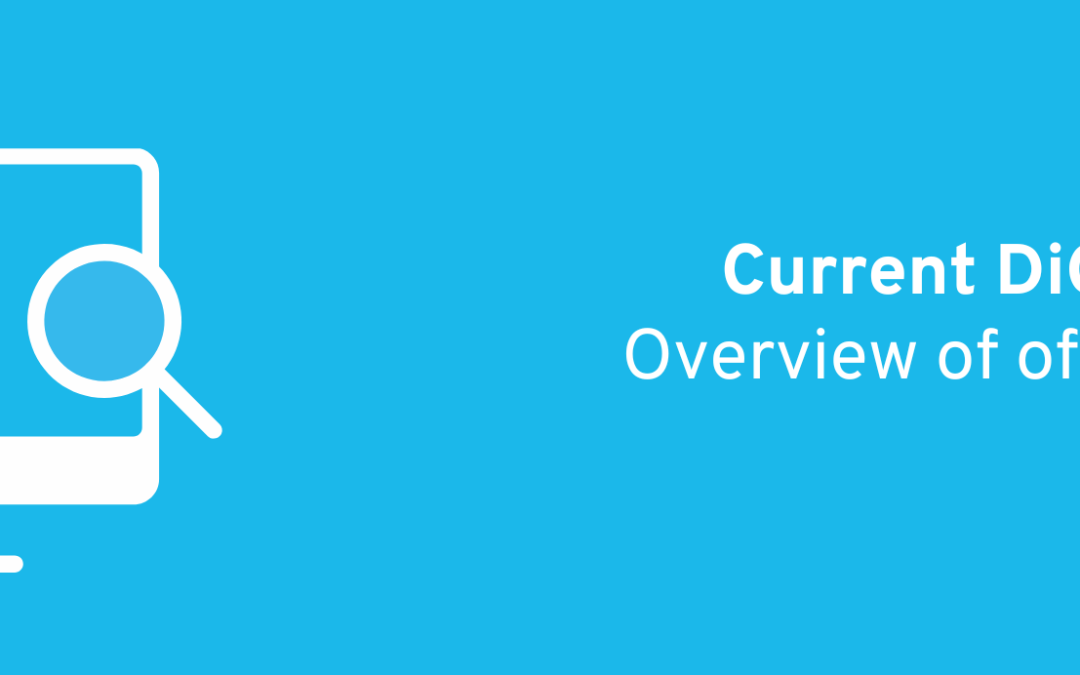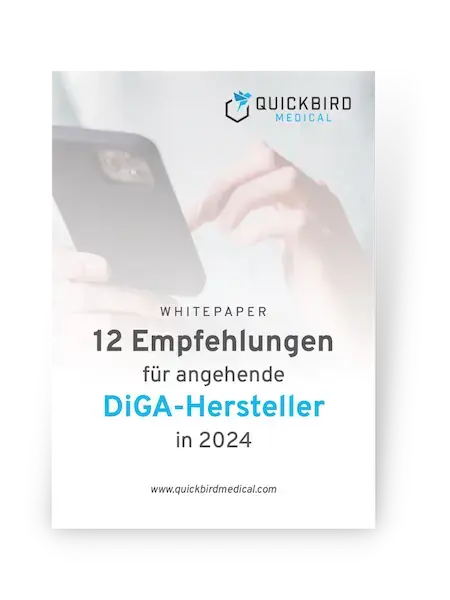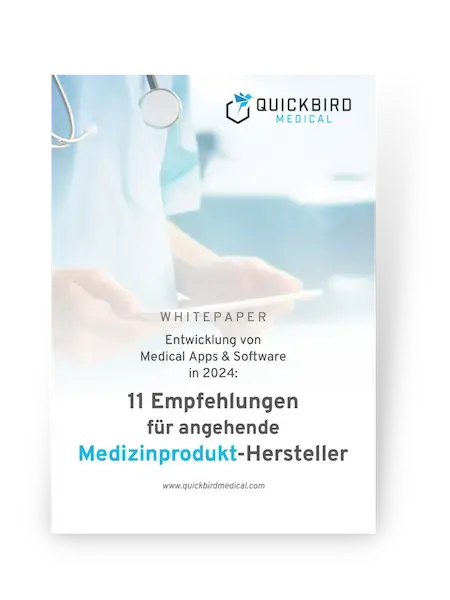Where exactly can I find the latest figures and reports for approved digital health applications (DiGA)?
For the strategic planning of new DiGA projects and market analyses, it is important to consider the prescription figures for listed DiGAs. However, when searching for current statistics, one comes across different reports from different institutions (GKV-Spitzenverband, Spitzenverband Digitale Gesundheitsversorgung, etc.).
In this article, we therefore provide a chronological overview with links to the DiGA reports of the most relevant publishers.
This article is continuously updated.
Content of this article
- All DiGA reports at a glance
- What data do the listed DiGA reports use?
- Which DiGA report should you take a look at?
All DiGA Reports at a glance
DiGA Report 2024
No figures are currently available for 2024. Every year, the billing data of all statutory health insurance funds are evaluated by 30 September and presented and summarized in the reports listed here.
The latest DiGA report was delivered by Techniker Krankenkasse in April 2024. Like the Barmer Arztreport, the report refers to data from 2023:
DiGA Report 2023
- DiGA Report of the GKV-Spitzenverband – GKV-Spitzenverband (translated: National Association of Statutory Health Insurance Funds) Report with the insured person data of all health insurance funds
- Market development of digital health applications (DiGA report) – German Association for Digital Healthcare (SVDGV): Report with data from all DiGA manufacturers according to self-disclosure
DiGA Report 2022
- DiGA Report of the National Association of Statutory Health Insurance Funds – GKV-Spitzenverband: National Association of Statutory Health Insurance Funds
- TK DiGA Report – Techniker Krankenkasse
DiGA Report 2021
- Digitization report – DAK Gesundheit
What data do the listed DiGA reports use?
GKV-Spitzenverband:
The GKV-Spitzenverband has published an annual DiGA report since 2022. The billing data of all statutory health insurance funds up to September 30 of the same year (in accordance with Section 33a (6) SGB V) serve as the data basis.
In addition, the GKV defines the reimbursement amounts for DiGA with the health insurance funds, which are reimbursed from the 13th month after admission, and also agrees a framework agreement with the DiGA manufacturers’ associations (such as the SVDGV), which includes regulations on reimbursement negotiations, maximum amounts and threshold values.
SVDGV:
With this year’s DiGA Report 2024, the German Association for Digital Healthcare (SVDGV) provides insights into developments in the DiGA market based on manufacturer data for the first time. The data collected in the report was accordingly requested by the SVDGV individually from each manufacturer for the respective DiGA.
As this is the first report of its kind, it covers the entire period following the listing of the first DiGA from October 2020 to September 2023.
In 2022, the SVDGV sharply criticized the National Association of Statutory Health Insurance Funds after its publication of the “DiGA Report 2022”. According to the SVDGV, the GKV once again failed to present the “still young healthcare sector in a neutral manner”. → to the statement
Techniker Krankenkasse:
Germany’s largest statutory health insurance fund with over 11.3 million insured individuals published an explicit DiGA report for the first time in 2022. For this purpose, billing data from around 16,000 TK insured individuals who were prescribed or approved a DiGA by December 31, 2021 was evaluated.
BARMER:
In its annual doctors’ report, Barmer is focusing on DiGA for the first time in 2024, analyzing data from its approximately 8.7 million insured individuals. In addition, a total of 1,000 practitioners from the DocCheck Panel were surveyed online in November and December 2023 about their attitudes towards and experiences with DiGA.
DAK Gesundheit:
The DAK publishes an annual health report. The last dedicated “Digitalization Report”, which ultimately also covered the topic of DiGA, was published by the Hamburg-based health insurance company in 2021 in cooperation with the “Ärzte Zeitung”.
An online survey from September 17 to November 1, 2021 and a survey conducted by ePatient Analytics with 569 doctors and 16 psychotherapists from all over Germany serve as the data basis for the underlying study.
Which DiGA report should you take a look at?
The DiGA Report of the National Association of Statutory Health Insurance Funds (GKV-Spitzenverband) bundles all data from the statutory health insurance funds on the annual reporting date of September 30 and therefore offers the largest amount of data on the use of DiGA.
However, the GKV is confronted with repeated accusations by the SVDGV of not providing neutral reporting and delegitimizing DiGA by criticizing the high costs of DiGA, the approval process and the lack of evidence in some cases. As a result, the SVDGV published its own DiGA report for the first time this year, based exclusively on manufacturer data.
The occasional DiGA (interim) reports of the above-mentioned health insurance funds also offer interesting insights, albeit limited to data on their own insured persons.
Further assistance and market analysis tools for planning your DiGA:
- Blog post: Turnover & costs: Is a DiGA worthwhile? (incl. Excel planner to forecast the turnover & costs of your DiGA)
- DiGA directory: Analysis tool for manufacturers – comparison of DiGA by medical device risk class, regulatory authority, DiGA prescription duration and list price
- DiGA statistics: Real-time dashboard – information on risk class distribution, prices and costs, duration of prescriptions and much more.
- Free white paper: “12 important recommendations for prospective DiGA manufacturers in 2024” – summarizing experiences from our successfully implemented DiGA projects
If you are planning a medical app, DiGA or DiPA and need support with the development, please feel free to contact us and we will discuss the whole thing together without obligation. We develop medical apps for companies and research institutions on a contract basis.
Further questions? Please feel free to call us (+49 (0) 89 54998380 or send us an e-mail (kontakt@quickbirdmedical.com).
We look forward to hearing from you!





